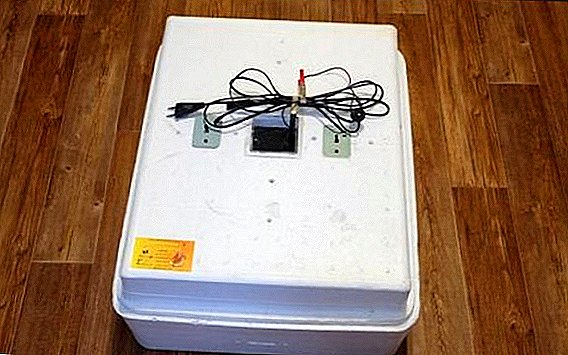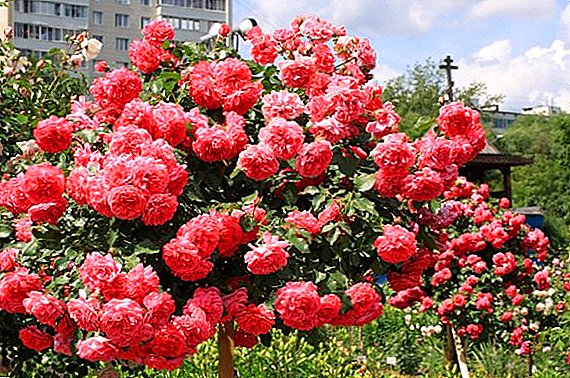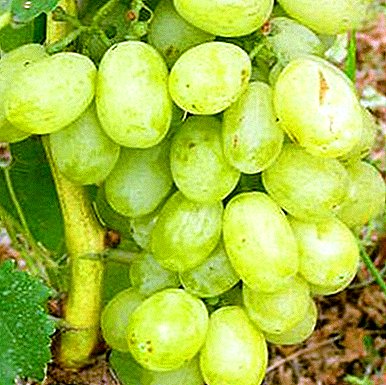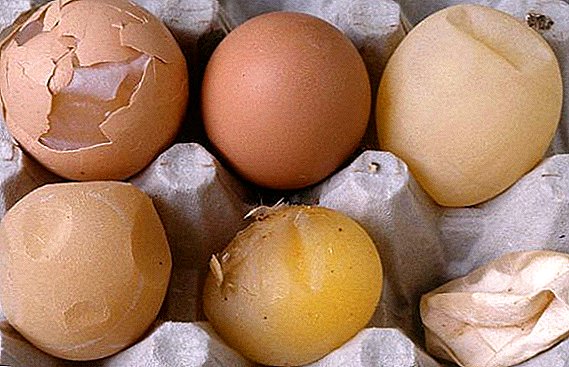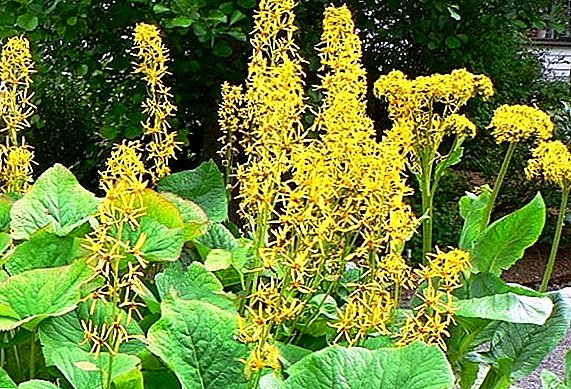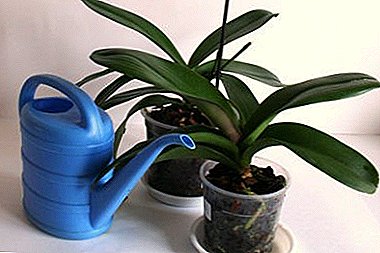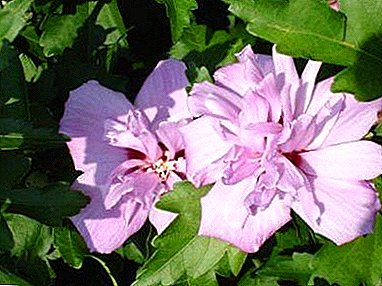
Ornamental Syrian hibiscus bushes Ardens will decorate any flowerbed in the garden. Widely used in landscaping schools, kindergartens, parks. It is perfectly adjacent to the rose, combined with lavender, looks contrast against the background of coniferous trees.
The article will tell about the features and rules of care for a garden plant, show a photo, and also tell you how it winters in the garden.
In addition, you will learn how to propagate this wonderful shrub with seeds and cuttings, as well as exactly which diseases and pests can threaten this plant and how to deal with them.
Description
Hibiscus Syrian Ardens (Hibiscus syriacus Ardens) is a deciduous shrub of the genus Hibiscus of the Malvaceae family. The synonymous names of the plant are Syrian rose, katmiya. The bush is compact, grows vertically. The height of an adult bush is up to 1 - 2. 5 m. The width of the bush grows to 1 - 2 m. The crown is thick and lush. Stems strong, erect.
The leaves are alternate, ovate, three-lobed in shape. Leaf plate in early spring yellowish shade, in summer - green. The flowers are large, double, single, purple. Flower diameter - up to 9 - 10 cm. Flowering continues all summer, until the beginning of autumn. Fruits - egg-shaped boxes. The seeds are smooth. Taproot, fleshy.
A photo
Then you can see the photos of the plant:



History of
The ancient Greek name of the rose Alcea rosea L is assigned to the genus Hibiscus. All natural varieties come from tropical and subtropical areas. In home gardening, it has been used since the mid 19th century. Homeland - China, Korea. Currently often bred in the Caucasus and Crimea.
Care
Temperature
The optimum air temperature is 22 - 26 ° C. The plant is winter-hardy, able to tolerate a decrease in temperature to -10 - 15 ° C (with shelter).
Watering
In the summer, for better flowering requires abundant watering after 1 - 2 days. In the autumn watering is moderate. Water should be soft, otstoyannoy, warm water at the root.
Overdrying of soil leads to the fall of buds.
Shine
The variety prefers bright ambient lighting. Landing is carried out on the eastern or western part of the house.
With a lack of light, the stems are pulled out, flowering slows down.
Priming
The soil should be loose, fertile, well drained. Soil composition:
- Garden land - 2 hours
- Peat - 1 hour
- Sand - 1 hour
- Humus - 1 hour
- Drainage.
Compost or rotted manure is poured into the soil.. Part of the sod land is added to the sandy soils.
Fine gravel, clay splinters, and expanded clay are used as a drainage layer.
Pruning
- After wintering, all dry and frozen stalks are pruned.
- In the fall, adult bushes should be thinned, cut shoots exposed at the base.
- In spring, shoots are shortened by 2/3, weak, damaged, old stems are cut to the very foundation.
- Places slices sprinkled with crushed charcoal.
Top dressing
- In the spring, mineral complex top-dressings with a high nitrogen content are added to increase the green mass of the bush.
- In early summer, potash mineral fertilizers should be used during the formation of buds and abundant flowering.
- During the summer, phosphate additives are required to support flowering and winterization.
- On the soil surface peat is scattered - organic fertilizer (for the development of a powerful root system).
Transfer
 Transplant is done in early spring, in April.. Saplings are transplanted from temporary containers, and adult bushes are planted as the root system grows.
Transplant is done in early spring, in April.. Saplings are transplanted from temporary containers, and adult bushes are planted as the root system grows.
Transplant plan:
- Dredging planting hole size of 2 p. more root volume.
- The soil is mixed with compost.
- A sapling is extracted from the temporary container along with an earthy ball.
- The seedling is installed in the hole vertically.
- Hollows are filled with the prepared mixture, the soil is compacted.
- The soil is abundantly moistened.
In areas with a cold climate, the plant is grown in containers.. In the spring, they are taken out to the fresh air, the containers are buried in the garden or placed in a warm, lighted place.
Important: it is not recommended to move and rotate containers after bud formation.
How winters in the garden
- In warm climates, the plant winters without shelter. At the end of autumn, all thin shoots are cut, you need to leave only the "skeletal" stems. The soil is mulched with peat, fertilized through watering with phosphorus additives.
Young saplings of garden hibiscus, up to 3 years require light shelter (coniferous litter, spruce branches, leaves).
- In areas of the middle zone of the plant requires protection for the winter. The soil is mulched by fallen leaves, cut bushes are covered with straw, brushwood, and pine spruce branches. At the beginning of winter, bushes are tied with sacking or agrofibre.
- In the northern areas it is recommended to dig up the plant for the winter.Replant in tub. Tanks are rearranged to a cool room with good light until next spring.
After wintering in open ground, when establishing heat (air temperature is 12 - 15 ° C), the shelter is removed. For the appearance of the first shoots the soil is cleaned.
Growing Syrian handsome
Seeds
Terry flower is not inheritedOnly the coloring is transmitted.
 This method is used by breeders for breeding new varieties. Seeds must undergo preliminary stratification. The process is lengthy, time consuming. Flowering occurs after 4 - 5 years from the time of sowing.
This method is used by breeders for breeding new varieties. Seeds must undergo preliminary stratification. The process is lengthy, time consuming. Flowering occurs after 4 - 5 years from the time of sowing.
Seed planting procedure:
- Seeds are soaked in a growth stimulator.
- In a special substrate in separate containers (cups) planted for 1 seed.
- When sowing in spacious containers, a dive of sprouts is required after the appearance of 1 - 2 leaves.
- Seedlings are kept in a warm bright place.
- When 6 - 7 leaves appear, the seedlings begin to bush, it is necessary to pinch the tops of the shoots.
- Saplings by the method of transshipment are transplanted into new separate containers for growing.
- Regular watering and fertilizer.
- The following spring, the matured plants are planted in open ground.
Cuttings
The most convenient and common method. After spring pruning, twigs can be used for cutting.
Scheme rooting cuttings:
- The stems are established in a container with water until the appearance of root processes.
- Cuttings after a month are planted in small tanks for growing.
- The temperature of the cuttings - 18 - 20 ° C.
- The light is bright, diffused.
- Watering moderate.
- After wintering, young seedlings are transplanted to a permanent place.
Root cuttings can be wet peat substrate.
Diseases and pests
- From the dry air in the heat may appear aphid affecting the leaves. Requires spraying the bushes with an alcohol solution of liquid soap.
- Spraying bushes with aktar or aktellik will save the moth from the peppered moth.
- For the prevention of diseases, it is necessary 1–2 times per season to process bushes and soil with a solution of any insecticides.
Similar flowers
- Terry rod. Shrubs up to 2 m. The flowers are soft pink, purple, blooming profusely.
- Mallow musk. The flowers are deep pink, the leaves are green, cut.
- Forest mallow "Zebrina". The leaves are bright green, jagged. The flowers are pink with purple stripes.
- Mallow Moorish. Stems straight. Lobed leaves, gently - green. The flowers are large, light purple hue.
- Sedaltsiya oregano "Brillant". The height of the bush is up to 1 m. Flowering is long, from June to the end of August. The flowers are bright pink.
Cultivation and reproduction of the Syrian Ardens hibiscus will not be difficult. The plant grows well, takes root quickly, tolerates wintering well. The main thing is to follow all the rules of care and maintenance.


